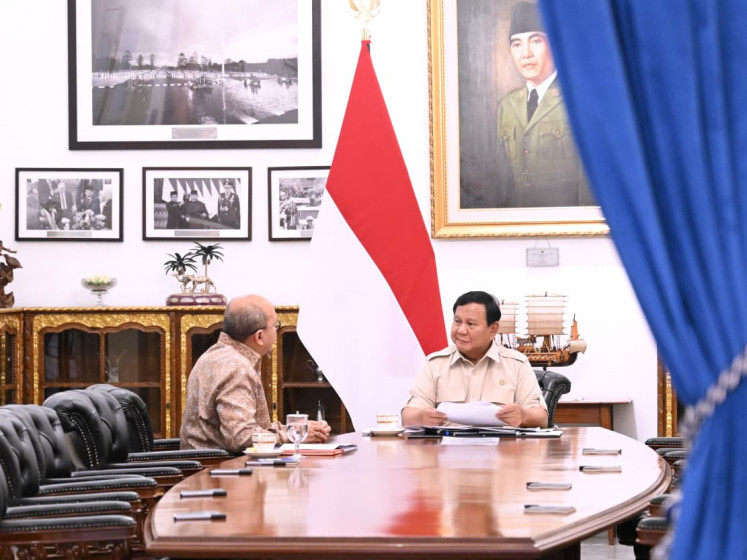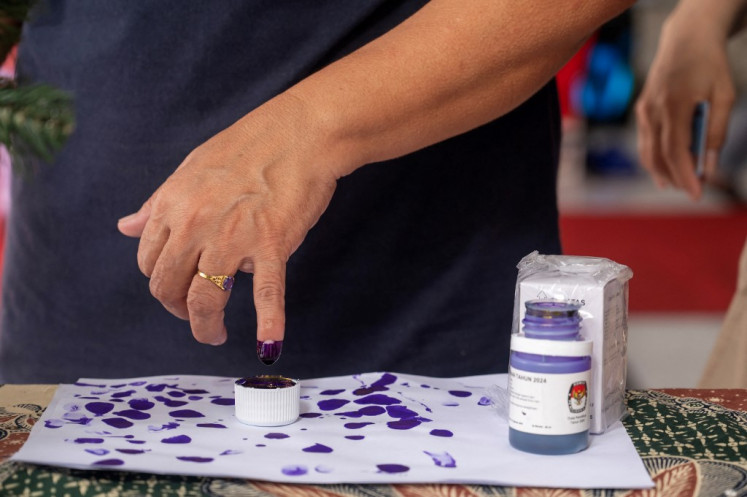Popular Reads
Top Results
Can't find what you're looking for?
View all search resultsPopular Reads
Top Results
Can't find what you're looking for?
View all search resultsMaritime archaeology in the archipelago
Asia is a literal treasure trove of marine antiquities, lost and found, but some of those treasures have been overlooked or even taken advantage of due to a lack of government attention to maritime culture
Change text size
Gift Premium Articles
to Anyone
A
sia is a literal treasure trove of marine antiquities, lost and found, but some of those treasures have been overlooked or even taken advantage of due to a lack of government attention to maritime culture.
Compared to other Indo-Pacific neighbors such as Australia, the prevalence of looting and the destruction of important historical sites in Indonesian waters signals a dire need for better shipwreck management policy.
Indonesia’s seabed is relatively flat, with many wrecks lying in water roughly 50 meters deep. This leads to many wrecks being inadvertently discovered by fishermen whose lines or nets get snagged on the remnants. Aside from the destruction the nets cause, those discoveries often lead to looting.
“I recently examined a 15th century site in Sabah that had been totally looted, despite lying only 500 meters from a coastal police post,” archaeologist Michael Flecker said. “More and more local divers are getting into the looting business, and there are less and less properly documented shipwreck excavations.”
Flecker has spent a career in the archaeological study of Asia, and has directed the excavation of the 9th century “Belitung Wreck”, the 10th century “Intan Wreck”, the 15th century “Bakau Wreck”, and the 13th century “Java Sea Wreck” in Indonesia.
In the better cases, fishermen who discover a shipwreck will inform the authorities or private salvage companies who look for such tip-offs. However, government bureaucracy often sours companies from attempting such work.
“I have met Indonesian archaeologists at a number of conferences. They tend to be optimistic about future maritime archaeological work in Indonesia. I have yet to see whether their optimism has been justified,” said Flecker. “With so many indirect costs, there is little incentive for salvagers to spend on archaeology.”
Luc Heymans, the managing director of salvage company Cosmix Underwater Research, has experienced such headaches with the system during his company’s labored excavation of a wreck near Cirebon, West Java.
“You are facing all these problems in the country, and then you try to do the best you can with foreign input and then after, you get UNESCO knocking on your head also,” Heymans said.
“I could have been like a lot of companies. I could just go down, move all the bad pieces, take all the good pieces, bring it up, and for the Indonesian government it would have been the same.”
A lack of appreciation by international institutions looking in exacerbates the issue, with the Smithsonian Institute recently canceling an exhibition on the Belitung Wreck due to ethics concerns.
The Australasian Institute for Maritime Archaeology (AIMA) condemns the sale and trade of underwater archaeological material, stating that it is incompatible with the ethical, sustainable management of archaeological sites and collections, thus ruling out the acceptance of commercial salvage as legitimate archaeology.
Australia adapted its laws from a UK model of maritime archaeology and preservation to ensure a high level of public education and cultural awareness, which helps minimize the danger of shipwrecks being looted or damaged.
“With regard to foreigners looting and exporting, this is rare in the rest of Asia as policing of foreigners seems to be pretty well enforced. Local divers, on the other hand, are looting with relative impunity,” said Flecker of his recent experience in Asia.
As it stands, the preservation of Indonesian maritime history falls largely in the hands of privately owned, commercial salvage companies.
The government must grant a license to a local company before they can begin any kind of salvage work on a wreck, or even survey it. However, those licenses are often prohibitively expensive and are only part of the enormous costs associated with marine salvage.
“The local company has a contract with the government, and you are a subcontractor,” Heymans said.
Flecker said, “Unqualified companies are allowed to search for and excavate shipwrecks as long as they can afford to pay the high deposit and fees.” In an article from 2006, he wrote, “The deposit is supposed to be to ensure that the company complies with the rules and regulations, but they don’t.”
Both Flecker and Heymans agree that an overhaul of the system is required.
“Companies should only be selected on merit. There must be well-defined minimum standards,” advised Flecker in the same article. “Excessive fees and deposits should be abolished giving much needed incentive for the companies to spend more on archaeology.”
“I personally think that maritime archaeology is going backwards rather than forwards in Southeast Asia,” Flecker concluded.










